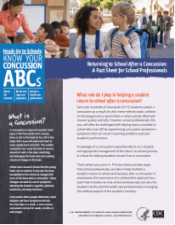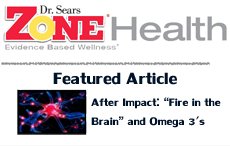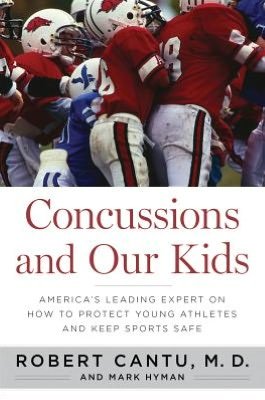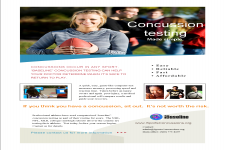What happens inside the brain when a concussion occurs?
Answer:
 Essentially, it’s a mismatch of supply and demand. The brain cells need energy to repair themselves during a time when they can’t get enough. These changes that happen during concussions occur at the cellular level. While the brain tissue itself appears completely normal on MRI or CT imaging, the brain cells are not functioning properly. After the initial hit that causes the concussion, there is a release of neurotransmitters that cause ions to move in and out of the brain cells abnormally. Calcium rushes in while potassium rushes out of the cells, disturbing the balance of electrical charges. The brain cells have to work very hard and use a large amount of energy to restore their normal balance. At the same time, there is a decreased blood flow to the brain, limiting the cell’s energy supply. It is this “energy crisis” is why the brain is so vulnerable when an athlete is concussed.
Essentially, it’s a mismatch of supply and demand. The brain cells need energy to repair themselves during a time when they can’t get enough. These changes that happen during concussions occur at the cellular level. While the brain tissue itself appears completely normal on MRI or CT imaging, the brain cells are not functioning properly. After the initial hit that causes the concussion, there is a release of neurotransmitters that cause ions to move in and out of the brain cells abnormally. Calcium rushes in while potassium rushes out of the cells, disturbing the balance of electrical charges. The brain cells have to work very hard and use a large amount of energy to restore their normal balance. At the same time, there is a decreased blood flow to the brain, limiting the cell’s energy supply. It is this “energy crisis” is why the brain is so vulnerable when an athlete is concussed.
What are we waiting for as healing takes place? The management of concussion is largely keeping the athlete safe while the supply and demand mismatch resolves. The majority of athletes resolve over the course of 1-2 weeks but some athletes may take months to completely recover. There are a number of factors that seem to influence recovery time including past medical history, previous concussions, age, etc. It is vital that athletes do not return to play while still having symptoms of a concussion.
Stanley A. Herring, MD, is a member of the NFL Head, Neck, and Spine Committee. He is also a Clinical Professor, Departments of Rehabilitation Medicine, Orthopaedics and Sports Medicine, and Neurological Surgery at The University of Washington, Director of Spine, Sports and Musculoskeletal Medicine UW Medicine Health System, Co-Medical Director, Seattle Sports Concussion Program and Team Physician Seattle Seahawks and Seattle Mariners.
Brain Health
It is rare for a sports-related concussions to result in a more serious injury such as a skull fracture or hematoma. Nonetheless, it pays to be aware that catastrpohic injuries do sometimes occur as ...
read more...-
CT scans may increase brain cancer risk
Children and young adults scanned multiple times by computed tomography (CT), a commonly used dia...
-
Sub-concussive impacts may affect learning
MINNEAPOLIS – A new study suggests that head impacts experienced during contact sports such as ...
-
Physical activity boosts learning
INDIANAPOLIS – School administrators looking to restructure the academic schedule should consid...




Neuroscience
Athens, Ga.- University of Georgia researchers have developed a map of the human brain that shows great promise as a new guide to the inner workings of the body's most complex and critical organ.
...
read more...-
Does CTE infect neuron to neuron?
NFL Hall of Famer "Iron Mike" Webster's life ended in 2002 when he suffered a heart attack at age...
-
Progesterone seems to protect neurons after injury
It is not yet known why girls suffer concussions at a higher rate than boys. The most prevalent...
-
Amino acids may restore concussion's chemical imbalance
Concussions are often called the "invisible" injury because they are usually not detectable by t...
Resources
- School professionals play an important role in the health of all students. Recognizing the signs and symptoms of concussion is important, as is managing their return to school ...
- https://
- CDC's Concussion Training for Clinicians
-
Concussion Education Video Programs - Free and Easy
Parents, athletes, coaches and medical professionals have access to concussion education created...
-
New concussion guidelines for team physicians
INDIANAPOLIS – Team physicians who assess and treat athletes suspected of concussion have new ...
quick links
Latest News
Concussions Occur...
...in Any Sport
REMOVE athlete from play
REFER to medical provider
REST no sports, no texting/TV
RETURN only with doctor's OK
Source: Children's Hospital Boston, Sports Concussion Clinic

































